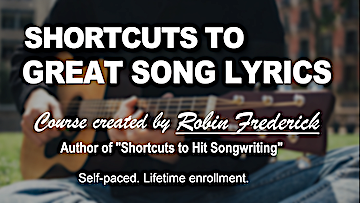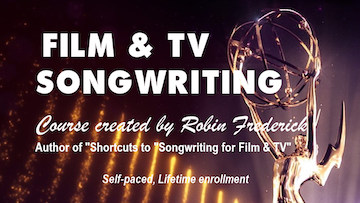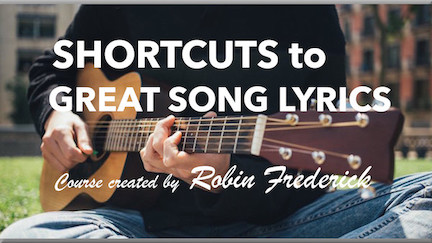WHY THIS SONG
The song “Bones” by Galantis and OneRepublic has been successful in three different music markets: a Dance Club hit, a Pop/Dance Radio hit, and Film & TV placements. Like many Dance genre songs, this one is the product of several talents including Swedish production duo Galantis and Ryan Tedder of OneRepublic.
In fact, there are nine songwriters credited with writing this song. You’ll see crowds of songwriters like these on many Pop and Dance hits, and even some Country songs. These songs are the result of a songwriting process called toplining.
WHAT IS TOPLINE?
When a vocal melody and lyrics are written to a pre-existing instrumental track, it’s called a “topline.” (The melody and lyrics are added “on top of” the track.) The producers of the instrumental track are considered part of the songwriting team. The topline might be written by two or three co-writers. Sometimes more producers or songwriters are added to the original crew. That’s how you get those big lists of songwriting credits.
There’s just one hitch—the original track producers have no idea what the melody will be, right? Because it’s going to be added later. To get around that problem, the producers create a music bed that consists of four common chords that repeat in the same order throughout the track. In the song “Bones,” those chords are…
F, C, G, Am repeated over and over.
So, how do you write a song to that?!! The challenge facing topliners is to create a melody and lyric that will turn a repetitive instrumental track into a song and give listeners an engaging experience that makes them want to listen again.
SONG GUIDE
“Bones” – OneRepublic & Galantis
Songwriters: Ryan Tedder, David Brook, Brett Mclaughlin, Andy Grammer, Lars Karlsson Christian, Jimmy Kennet Koitzsch, Daniel Majic, Justin Franks, Henrik Jonback
TECHNIQUES TO HEAR AND TRY
• Write a universal lyric using comparisons & associations.
• Punch up your chorus payoff line.
• Create a song structure by adding contrast to your melody.
Listen to the song. Read the lyrics.
Watch the lyric video on YouTube.
Read the lyric here.
GENRE/STYLE (EDM, Pop/Dance)
(What is a genre? Watch this video.)
The instrumental track for the song “Bones” is in the Electronic Dance Music (EDM) genre. This has been the dominant track style for the dance club scene for many years. The music production is often very complex with a sophisticated use of sounds, samples, and plugin effects, while the lyric and melody consist of simple chorus hooks and short verses.
But over the past few years, EDM songs have been crossing over to the mainstream Pop genre. They’ve become radio and streaming hits by expanding the chorus melody and adding well-developed lyric content. Artists like Dua Lipa, The Chainsmokers, Bebe Rexha, and OneRepublic regularly have EDM/Pop crossover hits. “Bones” is a good example of this blend of EDM and Pop.
SONG STRUCTURE
VERSE 1 / VERSE 2 / PRE-CHORUS / CHORUS
VERSE 3 / PRE-CHORUS / DOUBLE CHORUS
OPENING LINES
VERSE 1: You bring an energy I’ve never felt before…
VERSE 2: You’re like the opposite of all of my mistakes…
VERSE 3: So many people just walk in and out your life…
PRE-CHORUS: So if you’re asking me…
CHORUS: I feel it in my bones. I feel it in my bones.
THE PAYOFF LINE: That’s how I know, I feel it in my bones.
The payoff line is the last line (or two) of your chorus. It’s often the most important line in your song because it’s the line that listeners are likely to remember. Make sure it’s a strong, catchy hook that brings them back to your song to listen again.
FOUR TIPS FOR ADDING PUNCH TO YOUR PAYOFF LINE
1) Use your payoff line to sum up the heart of your song. Focus on the emotional message you want listeners to remember.
2) Use an image, action, or physical sensation in your lyric to add impact.
3) Give your payoff line a chance to sink in by repeating it (as this songs does), or adding a pause to draw attention, or stretching it out by adding extra syllables.
4) Give your payoff line a melody that adds a sense of finality or resolution before moving into your next section.
EDM TRACK AND SONG STRUCTURE
Before you start toplining get familiar with the Break, Build, and Drop track structure that is characteristic of this genre. Here’s a video that will walk you through it. What Is Topline Songwriting?
LYRICS
This song has a universal lyric. It doesn’t tell a story about the singer’s life or situation. Instead, it focuses on what the singer is feeling in the moment the song takes place.
This type of lyric works well for film and television scenes because it won’t conflict with the script’s storyline. Instead, it enhances the emotion, energy, or atmosphere the scene calls for. To do that, the lyric needs to convey those fleeting qualities to the viewer.
WRITE A UNIVERSAL LYRIC USING COMPARISONS
By comparing an emotion to something viewers or listeners can touch, see, sense, or react to, we solve the problem of making vague statements like “I love you. I need you.” Instead, we can express emotions in ways that listeners can experience and feel for themselves.
In this song, the line that ends each verse—You feel like home—tells listeners how the singer feels about “you.” If the singer just said “I love you,” we wouldn’t learn much. But by comparing “you” to “home,” we can get a sense of what the singer feels by filling in our own emotional associations with “home”: comfort, peace, a safe haven, a feeling of belonging and acceptance. Aha, now I understand what the singer is feeling and I can feel it, too!
WRITE A UNIVERSAL LYRIC USING PHYSICAL SENSATIONS
Listeners can also engage with your lyric using their own physical reactions. When the singer says “I feel it in my bones,” the listener understands that it’s a deep, intuitive, gut level certainty. We know that because we’ve probably felt it ourselves.
There are more examples of physicality in this lyric. In the opening lines of the song, the singer says “you bring an energy,” and then you’re like “some kind of chemical that reaches to my core.” In the chorus he states that the feeling “cuts deep down through your chest into your soul.” These are all powerful physical sensations that the listener can actually feel on a subconscious level. This type of writing allows the listener to participate in the song by reacting physically to the lyric.
TRY IT NOW
Listen to a few of your favorite songs and see if you can spot examples of comparisons and words with physical associations.
MELODY
CREATE SONG STRUCTURE WITH MELODY CONTRAST
The trick to making a repetitive, four-chord instrumental track sound like a song is to create contrast in the melody between one song section and the next. The verse melody needs to sound different enough from the chorus melody that a listener will know when the track moves from verse to chorus. But with just four chords repeating over and over, how can you do that? Here are a four ways to create contrast in melody.
- Raise or lower the note range from one section to the next.
- Change the pace of the notes: fast/choppy to slow/smooth.
- Vary the rhythm patterns of the notes.
- Change the length of the melody phrases.
I’m sure you can find more, but these are the ones that are used in “Bones.” Play the song and listen for the following changes in the section melodies.
THE VERSES have a choppy, fast-paced melody in a low note range.
THE PRE-CHORUS note range moves higher. The melody is smoothed out and extended at the end of each line (me-ee-ee-ee-ee, know-oh-oh-oh-oh, hear-ar-ar-art).
THE CHORUS uses a variety of phrase lengths starting with two very short phrases (I feel it in my bones. I feel it in my bones.) Followed by the longest phrase in the song which also features the highest notes (And I know when it cuts deep down through your chest into your soul) followed by more short phrases.
Each of the three song sections has a distinct melody that’s different from the others. Even though the track never changes, listeners can easily identify which section is playing.
TRY IT NOW
Listen to the song and notice the ways in which the melody is different in each section.


CHORDS
“Bones” by Galantis and OneRepublic is a repetitive, four-chord song that uses common chords. It’s easy to play on eaither guitar or piano. The chord progression is…
F, C, G, Am.
You can play along with this song on guitar or keyboard. (No need to capo up or transpose.) Try singing along to see how it feels.
TRY IT NOW
Listen to more four-chord toplined songs to hear how the melody and lyrics work to turn the track into a song. Here are a few songs to get you started.
“Apologize” (OneRepublic), “Blue Tacoma” (Russell Dickerson), “Cheap Thrills” (Sia), “Closer” (The Chainsmokers), “Firework” (Katy Perry), “Halo” (Beyoncé), “Highway Don’t Care” (Tim McGraw), “Shape of You” (Ed Sheeran), “We Don’t Talk Anymore” (Charlie Puth).
To find more songs like this, search Google for “Songs with repeating four-chord progressions.” When you find a song you’re interested in, look for a karaoke version to practice your toplining skills!


